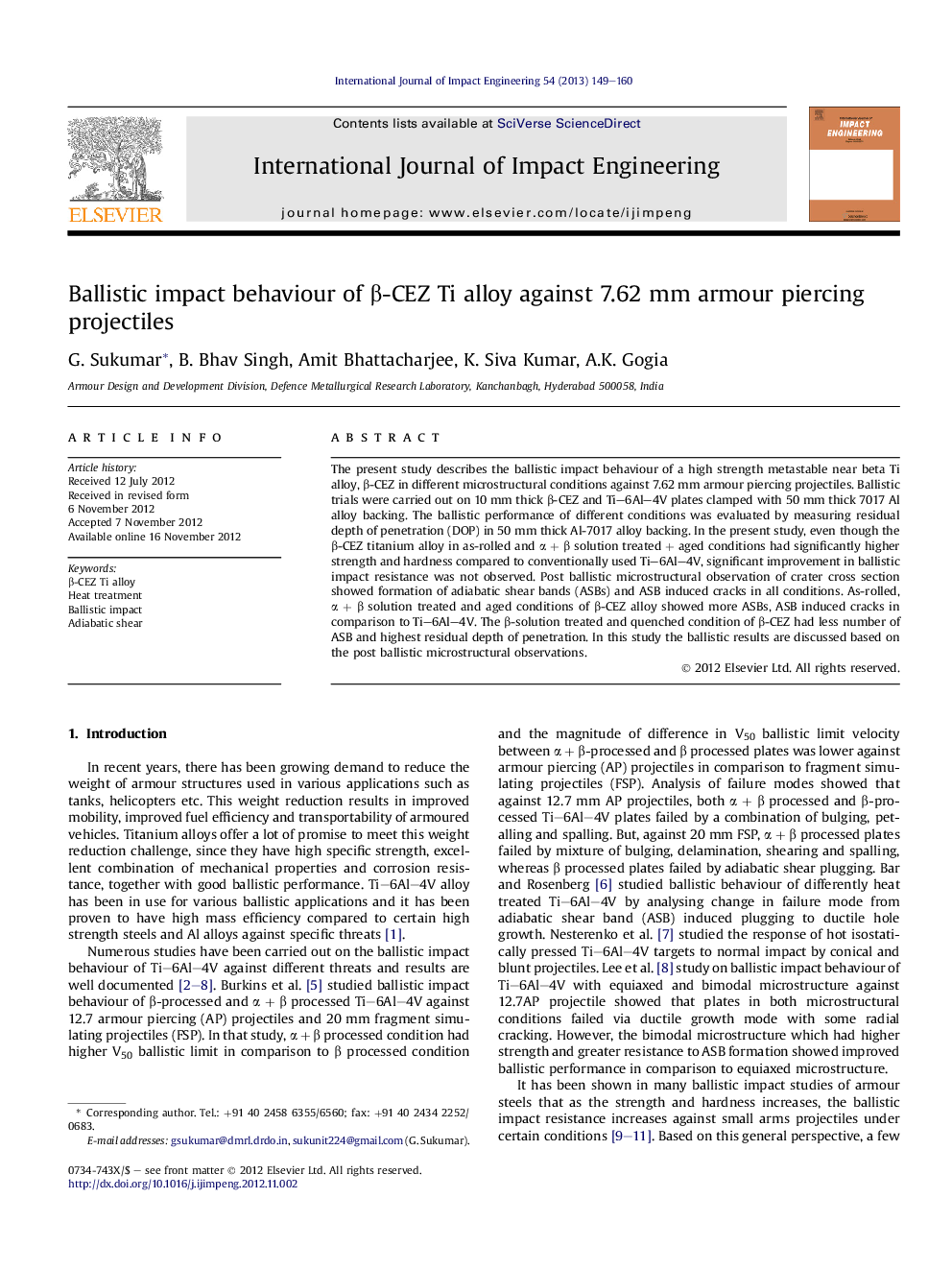| Article ID | Journal | Published Year | Pages | File Type |
|---|---|---|---|---|
| 779225 | International Journal of Impact Engineering | 2013 | 12 Pages |
The present study describes the ballistic impact behaviour of a high strength metastable near beta Ti alloy, β-CEZ in different microstructural conditions against 7.62 mm armour piercing projectiles. Ballistic trials were carried out on 10 mm thick β-CEZ and Ti–6Al–4V plates clamped with 50 mm thick 7017 Al alloy backing. The ballistic performance of different conditions was evaluated by measuring residual depth of penetration (DOP) in 50 mm thick Al-7017 alloy backing. In the present study, even though the β-CEZ titanium alloy in as-rolled and α + β solution treated + aged conditions had significantly higher strength and hardness compared to conventionally used Ti–6Al–4V, significant improvement in ballistic impact resistance was not observed. Post ballistic microstructural observation of crater cross section showed formation of adiabatic shear bands (ASBs) and ASB induced cracks in all conditions. As-rolled, α + β solution treated and aged conditions of β-CEZ alloy showed more ASBs, ASB induced cracks in comparison to Ti–6Al–4V. The β-solution treated and quenched condition of β-CEZ had less number of ASB and highest residual depth of penetration. In this study the ballistic results are discussed based on the post ballistic microstructural observations.
► Ballistic impact behaviour of β-CEZ Ti alloy against 7.62 AP projectiles was studied. ► Higher strength β-CEZ conditions does not show improved ballistic resistance. ► High strength β-CEZ conditions show higher numbers of ASBs, ASB induced cracks. ► Higher strength together with resistance to ASB is needed for ballistic resistance.
